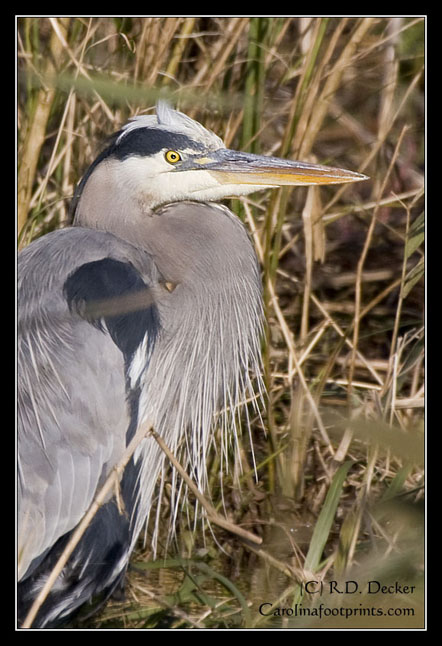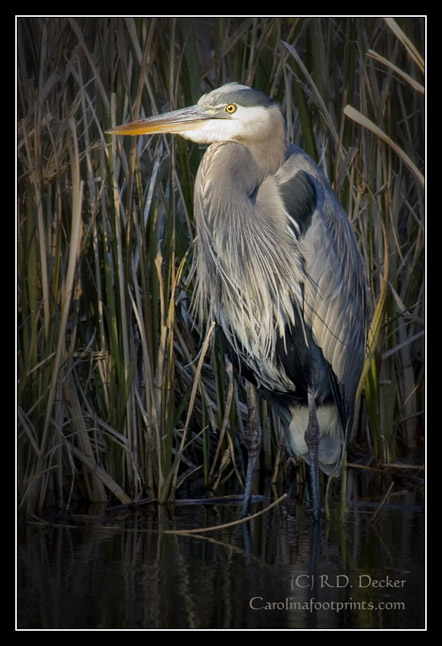The Great Blue Heron is a bird species frequently seen around Coastal North Carolina. With beautiful blue-grey coloring and black eyebrows that extend into plumes off the back of the head, they’re always a joy to observe. A large bird they stand 42 to 52 inches tall and have wingspans up to 6 feet across. These birds can be seen hunting in shallows of both salt and fresh water. They primarily feed on small fish, frogs, insects and snakes. A year-round resident in Coastal Carolina, Great Blue Herons are migratory in the extreme western portions of the state. This magnificant bird can be found throughout the United States during the summer months.
When photographing Great Blue Herons it’s important to keep in mind they’re frequently a bit darker than the surround Spartina grass or other common environments. The trick is to overexpose slightly compared to the reading provided by your camera’s metering system. Plus 1/3 to 2/3 of a stop is usually sufficient. Don’t overexpose too much or you blow the detail in the head area. Approaches towards these birds needs to be slow and cautious. They spook easily. Learning where they like to hunt then staking out that area may be more productive than attempting to stalk them for photographs. To find opportunities for observing or photographing Great Blue Herons try visiting the Tideland Trail near Cape Carteret, The Pinecliff Recreation area section of the Neusiok Tral, or take a drive through Downeast Carteret county along Highway 70 between Beaufort and Cedar Island.


